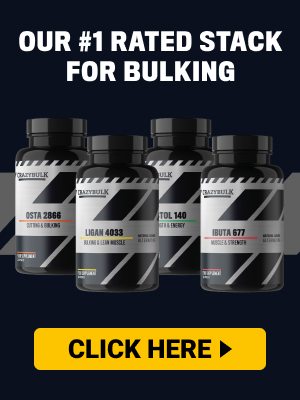Beginner’s Guide to Recovery: Sleep, Rest, and Nutrition
Most beginners think building muscle is all about the gym. They obsess over the perfect workout split, the right rep ranges, and which exercises to do.
But here’s the truth: muscle growth doesn’t happen in the gym — it happens when you recover.
When you lift, you’re breaking down muscle fibers. Recovery is when your body repairs and rebuilds those fibers, making them stronger and bigger.
Without enough recovery, your progress slows, your risk of injury rises, and you’ll eventually burn out.
This guide will break down the three pillars of recovery every beginner must master: sleep, rest days, and nutrition.
Why Recovery Is Just as Important as Training
Think of recovery as the glue holding your entire muscle-building program together. Without it:
- Strength gains stall (no progressive overload).
- Muscles stay fatigued (no repair, no growth).
- Injuries creep in (overuse and poor form).
- Motivation drops (CNS fatigue and hormonal stress).
👉 Recovery is not optional — it’s your secret weapon.
Sleep: The Anabolic Miracle You’re Probably Skipping
Sleep is hands-down the most powerful recovery tool you have. While you’re asleep, your body releases growth hormone, testosterone peaks, and protein synthesis ramps up.
How Much Sleep Do You Need?
- Beginners should aim for 7–9 hours per night.
- Elite bodybuilders often push for 8–10 hours (including naps).
Tips for Better Sleep:
- Keep a consistent sleep schedule.
- Make your room cool, dark, and quiet.
- Avoid screens 1 hour before bed.
- Eat your last meal 1–2 hours before sleeping (protein + carbs aid recovery).
👉 If you cut sleep short, you’re cutting muscle growth short.
Rest Days: Training Smarter, Not Harder
Beginners often make the mistake of training every single day. More isn’t always better. Your muscles need downtime to recover.
How Many Rest Days Per Week?
- On a full-body plan (3x per week): 4 rest days.
- On a push-pull-legs split (6x per week): 1 rest day.
- As a beginner, 3–4 workouts per week is plenty.
What Counts as Rest?
- Active Recovery: Light cardio, stretching, yoga, or walking.
- Passive Recovery: Total rest (good for intense strength phases).
👉 Pro Tip: If you’re sore, tired, or your lifts are regressing, your body is telling you to rest. Listen to it.
Nutrition: Recovery Fuel for Your Muscles
Without proper nutrition, you can sleep and rest all you want, but growth won’t happen. Food is the raw material for repair.
Key Recovery Nutrients:
- Protein (1.6–2.2 g/kg): Repairs damaged muscle fibers.
- Carbs (3–6 g/kg): Replenish glycogen stores, fuel your next workout.
- Fats (20–30% of calories): Support hormones like testosterone.
- Hydration: Dehydration slows recovery and performance.
Recovery Meals:
- Post-Workout: Fast-digesting protein (whey, egg whites) + carbs (rice, oats, fruit).
- Before Bed: Slow-digesting protein (casein, cottage cheese, Greek yogurt).
🔗 Related Guides: [Protein for Muscle Growth], [The Gallon of Milk a Day (GOMAD) Diet]
The Role of Stress and Lifestyle
Recovery isn’t just sleep and food — it’s also mental. High stress raises cortisol, a hormone that breaks down muscle and slows recovery.
Tips for stress management:
- Keep training fun — don’t burn out with a program you hate.
- Do low-stress activities on rest days (walking, stretching, hobbies).
- Meditate or journal to keep your mind clear.
How to Tell If You’re Under-Recovering
Signs you’re not recovering properly:
- Constant fatigue and soreness.
- Plateau or decline in strength.
- Sleep problems despite feeling tired.
- Frequent minor injuries.
- Mood swings or lack of motivation.
👉 If you notice these, reduce volume, take a deload week, or improve sleep/nutrition.
Beginner Recovery Framework
Here’s a simple recovery system every beginner can follow:
- Sleep: 7–9 hours every night.
- Training: 3–4 sessions per week (quality > quantity).
- Rest Days: At least 2 per week.
- Nutrition: Hit protein targets, eat a small surplus (if bulking), hydrate.
- Lifestyle: Manage stress, stay active outside the gym.
Stick to these basics, and you’ll maximize your results without burning out.
Final Thoughts
Recovery isn’t a luxury — it’s part of the training process. If you train hard but ignore sleep, rest, or nutrition, you’re leaving gains on the table.
Beginners often think success is about pushing harder, but in reality, it’s about finding the balance between training and recovery. Lift smart, rest well, eat right — and watch your body transform.
🔗 Next Steps:
- Pair this with the [Beginner Full-Body Workout Plan]
- Learn [How to Track Progress as a Beginner]
- Move on to the [5×5 Strength Training Program] for long-term growth






